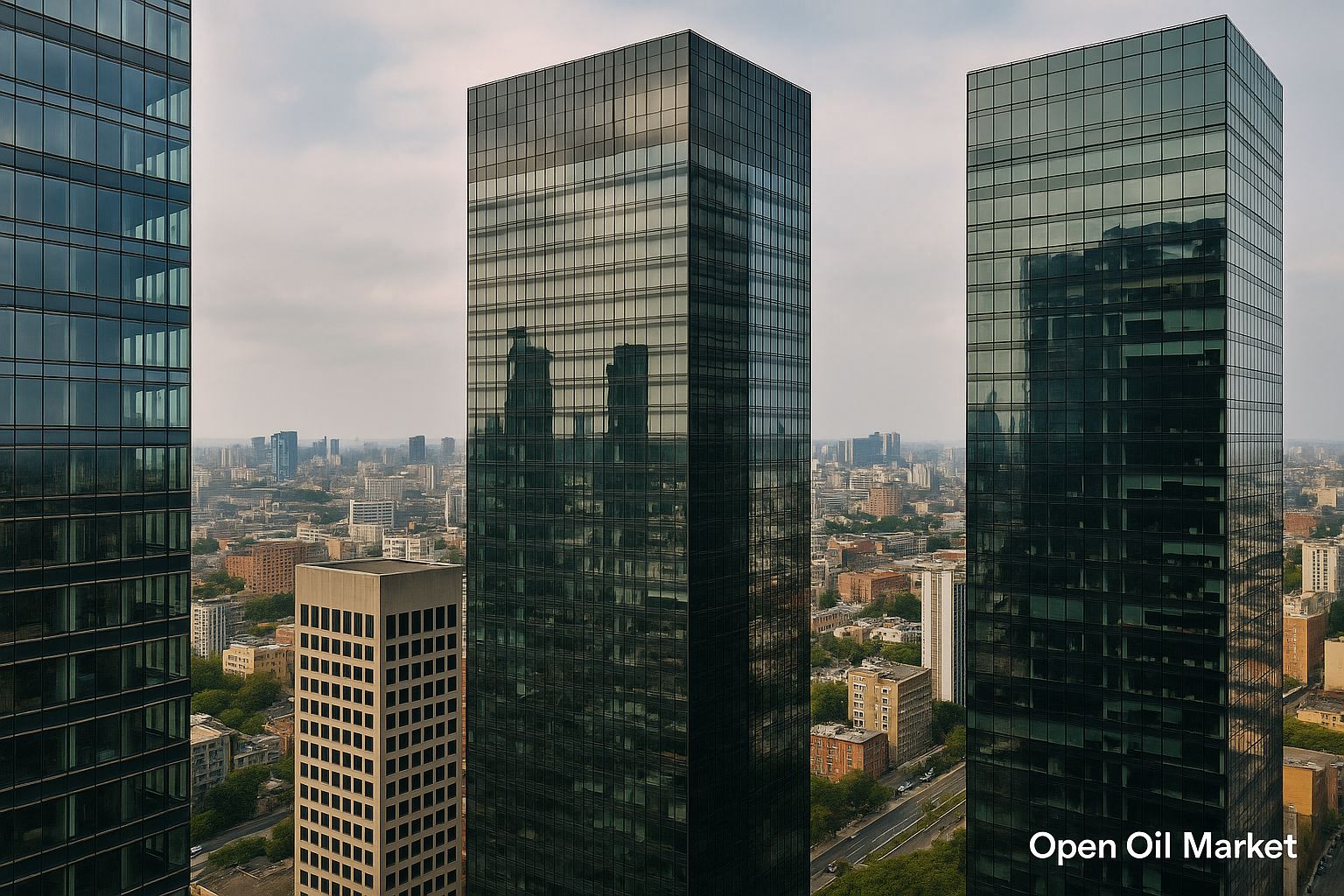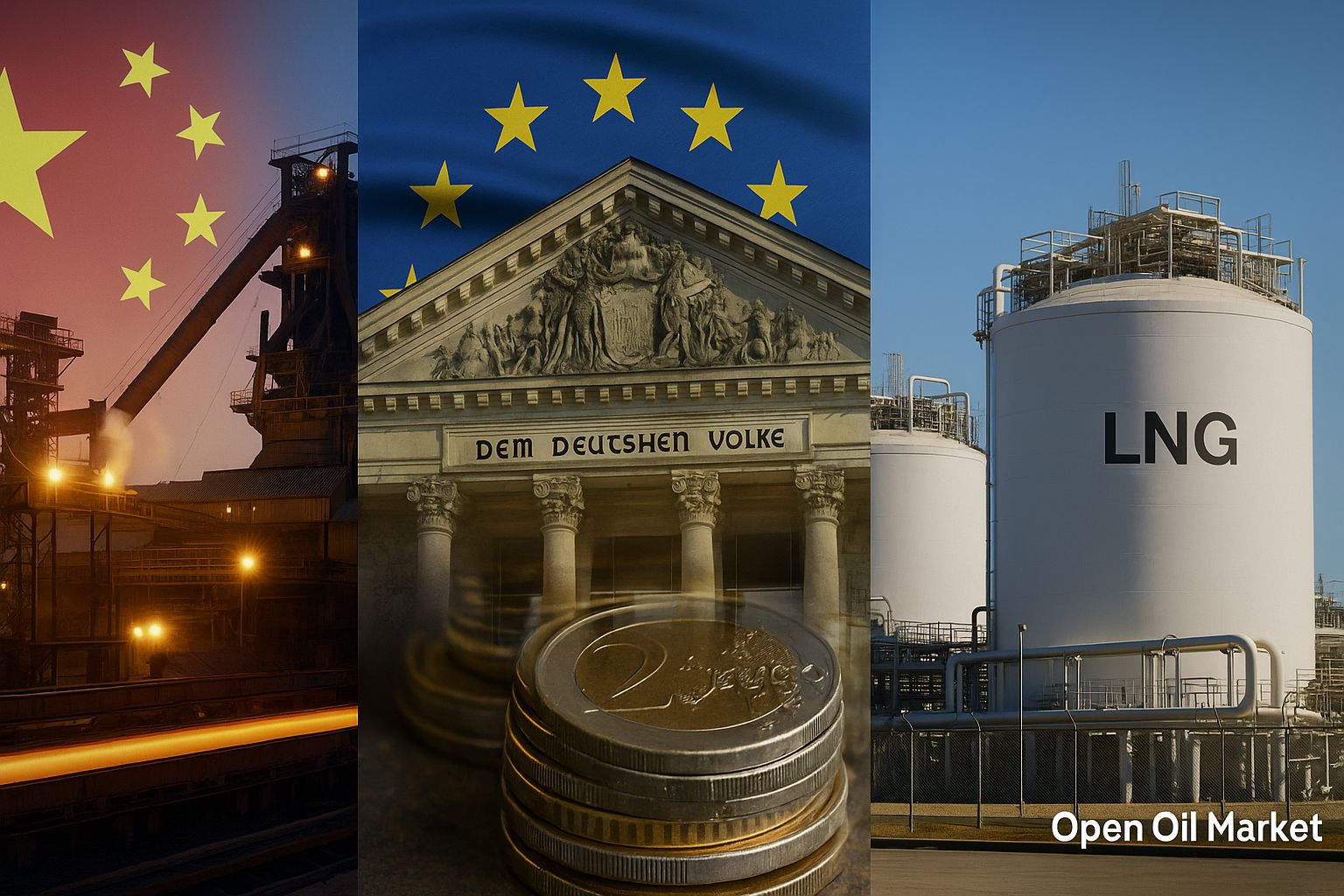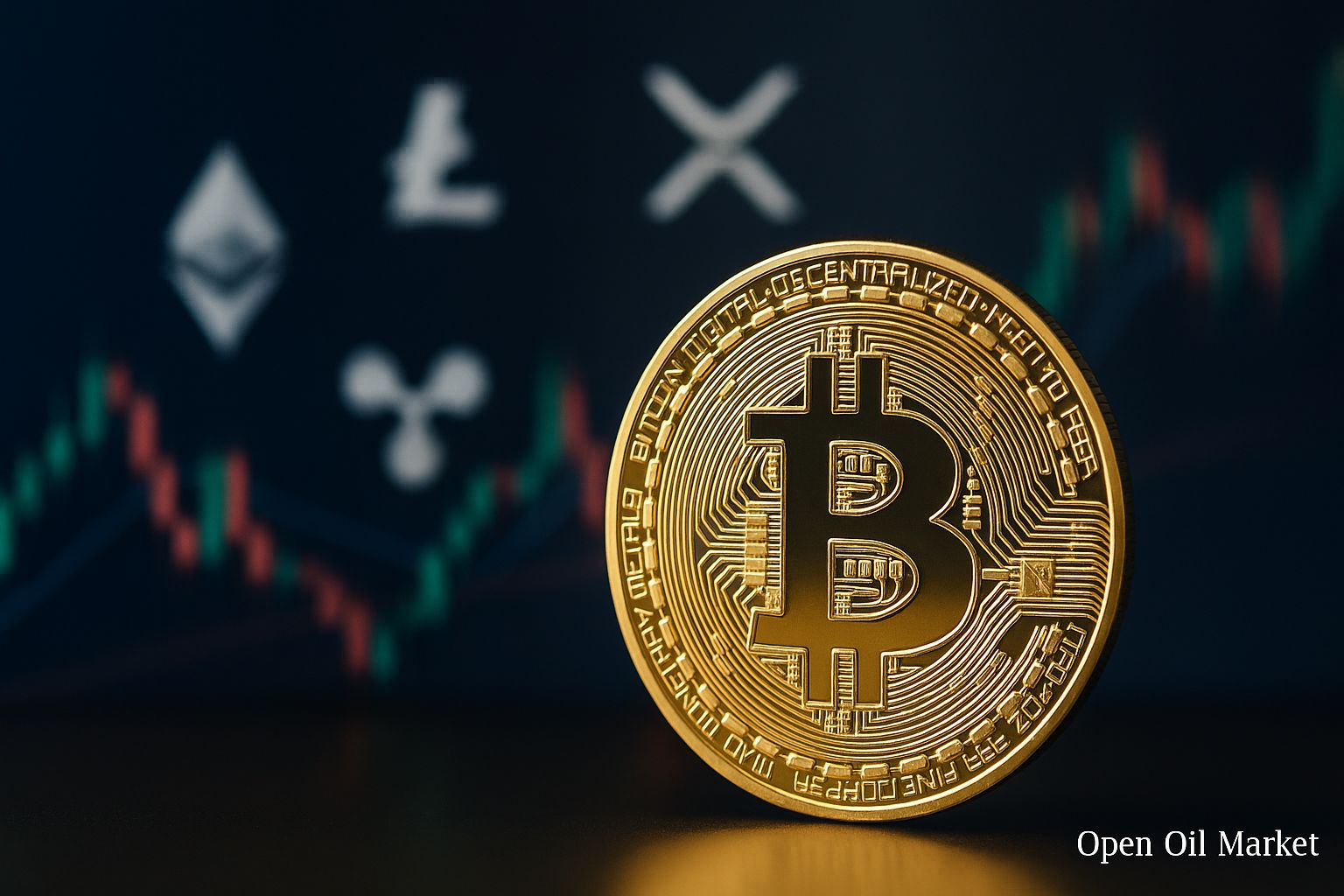
Global Startup and Venture Investment News for 8 November 2025: Record Deals in the Artificial Intelligence Sector, the Return of Mega Funds, Revival of the IPO Market and Increased Interest in Crypto Startups. A Comprehensive Overview for Venture Investors and Funds.
By early November 2025, the global venture capital market continues its steady growth following several years of decline. Investors worldwide are actively funding technology startups once again — record deals are being made, companies are revisiting IPO plans, and major funds are returning to the market with substantial investments. Governments are enhancing support for innovation, striving not to lag behind in the global technology race. Consequently, private capital is once more flowing into startup ecosystems, providing young companies with resources for accelerated growth.
Data from the third quarter of 2025 confirms the revival: global venture investment volume reached approximately $97 billion for the quarter, which is around 38% higher than the previous year and slightly surpasses the figures from the previous quarter. This is the best quarterly result since 2021 and marks the fourth consecutive quarter with volumes exceeding $90 billion. Following the downturn of 2022-2023, startup funding has been steadily rising for four reporting periods in a row, reflecting a return of investor confidence. The main contribution to this growth has come from mega rounds in the artificial intelligence (AI) sector; however, a revival is evident at all stages: funding for late-stage companies is increasing particularly rapidly, showcasing significant growth year-on-year. Two-thirds of venture capital in the recent quarter went to startups from the US, but activity is also increasing in Europe, Asia, the Middle East, and other regions, highlighting the global nature of this upswing.
Venture activity is increasing in virtually all parts of the world. The USA continues to lead (with the AI segment developing particularly vigorously). In the Middle East, investment volumes have nearly doubled over the past year, while in Europe, Germany has surpassed the UK in total venture capital for the first time in a decade. In Latin America, Mexico has overtaken Brazil in attracting funds. India, Southeast Asia, and the Gulf countries are attracting record flows of investment amid a relative slowdown in activity in China. The startup scenes in Russia and neighbouring countries are also striving to keep pace despite external restrictions, with new funds and initiatives emerging to develop local ecosystems. Overall, the market is witnessing a global venture boom, though investors remain selective and cautious.
Below are key events and trends shaping the current agenda of the venture market as of 8 November 2025:
- The Return of Mega Funds and Large Investors. Leading venture players are forming record funds and are investing actively in startups again, saturating the market with capital and increasing the risk appetite.
- Record Investments in AI and a New Wave of Unicorns. Exceptionally large funding rounds are elevating startup valuations to unprecedented heights, particularly in the AI sector, resulting in the emergence of many new unicorns.
- The Revival of the IPO Market. Successful public offerings by technology companies and new listing plans signal that the long-awaited "window" for exits has reopened.
- Diversification of Sector Focus. Venture investments are flowing not only into the AI space but also into fintech, climate projects, biotechnology, space, and defence developments, with interest in crypto startups gradually returning.
- A Wave of Consolidation and M&A. Major mergers, acquisitions, and strategic deals are reshaping the industry landscape, creating new exit opportunities and accelerating company growth.
- Renewed Interest in Crypto Startups. Following a prolonged "crypto winter," the blockchain sector is once again attracting significant funds and attention from both venture funds and large corporations.
- Local Focus: Russia and the CIS Countries. New funds and programs are being launched in the region to develop local startup ecosystems, gradually attracting investor attention despite sanctions and other constraints.
The Return of Mega Funds: Big Money Back in the Market
The largest investment funds and institutional players are triumphantly returning to the venture arena, signalling a new rise in risk appetite. After a downturn in venture fundraising during 2022-2024, leading VC firms are resuming capital raising and launching new mega funds, demonstrating confidence in market prospects. For instance, the Japanese conglomerate SoftBank has launched the Vision Fund III with a volume of around $40 billion, focusing on cutting-edge technologies (with an emphasis on AI and robotics). In October, American Sequoia Capital announced the establishment of two new funds totalling $950 million (including $750 million for late-stage investments and $200 million for seed projects). Sovereign wealth funds from the Gulf countries have also become active, directing billions into innovative companies globally. The emergence of such mega structures suggests that startups will soon have even more opportunities to attract funding, while large investors prepare for another round of technological growth, accumulating significant "war chests" of capital.
Record Investments in AI and a New Wave of Unicorns
The artificial intelligence sector remains the main driver of the current venture upturn, displaying unprecedented levels of funding. According to analysts' estimates, since the beginning of 2025, AI startups have raised over $160 billion just in the US, which accounts for approximately two-thirds of all venture fund investments in the country. By year-end, global investments in AI companies could exceed $200 billion — an unprecedented achievement for the industry. The combined valuation of the ten largest AI startups (including OpenAI, Anthropic, xAI, and others) has approached an astronomical $1 trillion. Investors attribute the excitement surrounding AI to its potential to radically enhance efficiency across various sectors of the economy, unlocking multi-trillion dollar markets from software automation to personal virtual assistants. Despite concerns over overheating and discussions of a possible "bubble," venture funds continue to pour investments into AI startups, determined not to miss the next technological revolution.
The influx of capital into AI is accompanied by the emergence of numerous new unicorns and an increase in investment concentration. A large portion of funds is directed towards a limited circle of industry leaders receiving the largest rounds. Recently, around 70% of all investments in American startups have been going to just a few companies that are in high demand from investors. For example, in September, French generative AI developer Mistral AI raised about $2 billion, setting the record for the largest round in European AI market history. Even more impressive was American OpenAI, which secured $13 billion in funding in a single tranche — a record amount that sets a new benchmark for the industry. Such giant deals inflate company valuations to astronomical figures. Nevertheless, the venture market overall benefits from this spike: capital and talent are concentrating around promising directions, which may lead to breakthroughs in the future, even if some currently funded projects do not meet expectations.
In recent weeks, several startups have announced large-scale investments raised, confirming the return of "big cheques" to the market. Among the notable examples:
- Harvey (USA) — raised $150 million with a valuation of $8 billion for the development of a legal AI platform (lead investor: Andreessen Horowitz).
- Synthesia (UK) — $200 million at a valuation of $4 billion for scaling an AI video generation service (the round was led by GV — Alphabet's venture division).
- Fireworks AI (USA) — $250 million in a Series C round (valuation around $4 billion) to enhance the capabilities of its AI platform in genomics and healthcare.
- Legora (Sweden) — $150 million (valuation $1.8 billion) for the development of legal software with AI elements; the startup was founded in 2023 and has already entered the ranks of new "unicorns."
- Armis (USA) — $435 million in a pre-IPO round at a valuation of $6.1 billion to bolster its IoT cybersecurity platform (the round was led by Goldman Sachs in partnership with CapitalG).
The Revival of IPOs and Exit Prospects
Against the backdrop of increasing valuations and capital inflows, technology companies are once again eyeing public markets. Following a quiet two years, a revival of IPOs as a viable exit avenue for venture investors has emerged. Earlier in 2025, some unicorns successfully went public: for example, the issuer of the stablecoin Circle listed with a valuation of around $7 billion, while the crypto exchange Bullish raised around $1.1 billion through its IPO, achieving a valuation of $5–6 billion. These debuts signalled a return of market appetite for new placements, particularly in the fintech and cryptocurrency segments.
Major players are now preparing to take advantage of the opening "window." Insider sources indicate that the creator of ChatGPT, OpenAI, is contemplating an initial public offering in 2026 with a potential valuation of up to $1 trillion — an unprecedented level for the technology sector. In the blockchain industry, the company ConsenSys (known for developing the MetaMask wallet) has engaged JPMorgan and Goldman Sachs to prepare for its IPO, scheduled for 2026. If it goes ahead, this would mark the first public offering of a major developer in the Ethereum ecosystem and a significant event for the entire crypto industry.
Improved market conditions and a gradual clarification of regulatory requirements are also boosting the confidence of startups planning to go public. Regulators in the US are easing some of the uncertainties; for instance, the Securities and Exchange Commission (SEC) recently lifted its objections against ConsenSys regarding its crypto services, removing one of the obstacles to an IPO. As a result, major private companies are once again viewing the public market as a viable opportunity to attract capital and ensure liquidity for investors. Experts predict that the number of high-profile technology IPOs will increase in the coming couple of years, as the market window remains open and the valuation multiples favour exits.
Beyond AI: Healthcare, Climate, and Space
Despite the dominance of projects in the field of artificial intelligence, significant funds are also being directed towards other high-tech industries. Healthcare and biotechnology attracted around $15–16 billion in venture capital in the third quarter of 2025 — this is the third-largest figure after AI and IT infrastructure. A prime example of technology and medicine synergy is the startup Fireworks AI, which raised $250 million to develop an AI platform for genomic medicine (combining AI advancements with healthcare). Venture funds are also actively supporting climate and "green" projects. For instance, the Australian company Uluu secured AUD 16 million for the creation of biodegradable plastic from algae, while the Indian manufacturer of components for electric vehicles, Tsuyo Manufacturing, raised INR 40 million to expand its production. Although the scale of these deals does not compare to the massive rounds in AI, they reflect sustained investor interest in sustainable development and eco-technologies.
Increased attention is also being paid to space and other hard tech areas. In Europe, the private space company segment is rapidly growing: the Bulgarian satellite startup EnduroSat raised $104 million (with participation from Google Ventures, Lux Capital, and others) for scaling production of small satellites — in response to global demand for accessible means of space communication. In general, deep-tech industries are experiencing a boom: in 2025, significant funding rounds were secured by manufacturers of robotics, semiconductor components, and quantum computing systems, collectively raising tens of billions of dollars. While the level of investment in these areas currently lags behind the AI phenomenon, the distribution of venture capital is becoming increasingly diversified — from healthcare and climate solutions to space and defence technologies — supporting a wide front of technological progress.
Consolidation and M&A: Mega Deals Changing the Landscape
High startup valuations and intense competition are stimulating a new wave of consolidation in the industry. Major mergers and acquisitions are once again taking centre stage, reshaping the balance of power in the market. Strategic M&A allows corporations and investors to accelerate growth, acquire new technologies, or enter adjacent markets, while large acquisitions provide necessary exits for venture funds.
Recently, several notable deals have taken place, underscoring the trend towards a closer integration of traditional financial institutions and the startup world. For example, in October, investment bank Goldman Sachs announced the acquisition of venture firm Industry Ventures for nearly $1 billion. This move represents one of the largest purchases in the venture sector, reflecting the growing interest of bank capital in technology and startup assets. Additionally, major technology giants are renewing their activity in the M&A market, taking advantage of more stable valuations: over the past year, several industry leaders have acquired promising startups, aiming to strengthen their positions in AI, cybersecurity, and other key areas.
Consolidation is also impacting the crypto technology sector. Traditional financial corporations are showing interest in acquiring blockchain startups in light of sector recovery. According to media reports, the company Mastercard is exploring the possibility of acquiring several crypto projects (including the infrastructure startup ZeroHash) for nearly $2 billion, reflecting significant corporate intentions to establish a foothold in the digital assets sector. Overall, the resurgence of merger and acquisition deals — from banking investments in venture platforms to technological mega-deals — indicates the "maturation" of the market. Major players are primed to increase their presence via M&A, which in turn opens more options for startups for successful exits and integration into larger companies.
Renewed Interest in Crypto Startups
Following a prolonged downturn during the "crypto winter," the blockchain startup market is experiencing a revival: venture investments in the crypto industry are once again on the rise. In October 2025, funding for companies in the cryptocurrency and blockchain space significantly increased. In the first week of October alone, startups in the sector collectively raised over $3 billion, marking a sharp uptick compared to previous months. The American project Polymarket became a leader, raising a record $2 billion (with a valuation of around $9 billion) with support from exchange operator ICE — one of the largest venture deals of the year outside the AI sector. Following this, the financial prediction platform Kalshi secured $300 million (with a valuation of around $5 billion), confirming the market's willingness to invest in new fintech solutions at the intersection of traditional markets and cryptocurrencies.
Overall, infrastructure solutions for digital assets are also beginning to receive support from venture funds. The American startup Hercle, which is developing infrastructure for stablecoins, received $60 million in funding. Several other projects within the Web3 and blockchain services for businesses also successfully closed funding rounds. Simultaneously, leading players in the crypto market are reaching a new level of maturity — alongside preparing for an IPO, ConsenSys, with the involvement of major banks, is seeing growing interest from institutional investors in crypto assets. Easing of regulatory uncertainties in the US (such as progress in establishing rules for stablecoins and the approval of Bitcoin ETFs) and the participation of traditional financial giants in funding rounds reinforce the return of capital to the digital technology sphere. The crypto startup sector, having undergone a cleansing of speculative projects, is gradually restoring trust and regaining focus from venture investors.
Local Market: Russia and CIS Countries
Despite geopolitical restrictions, efforts are being made to develop local startup ecosystems in Russia and neighbouring countries. In conditions where international capital is largely inaccessible, local investors and institutions have focused on the domestic market. Over the past year, several new venture funds have emerged in the country — according to industry reviews, the number of active funds has increased from about 35 to 43. This indicates that a portion of Russian capital "trapped" domestically is beginning to flow into the technology sector, stimulating the creation of new investment teams and strategies. Corporate funds are being established within large companies, along with regional state funds aimed at supporting innovation.
Development institutions — such as the Skolkovo Foundation, Russian Venture Company (RVC), Internet Initiative Development Fund (IIDF), and others — have intensified acceleration programmes, competitions, and grants to offset the lack of external funding. In 2025, new startup studios have been launched at leading universities, as well as regional venture funds with the support of local authorities. However, the overall volume of venture investment in Russia remains modest compared to global figures. Significant barriers persist: high key interest rates and economic stagnation complicate the attraction of private capital, while technology companies face restrictions in accessing international markets and technologies. Nevertheless, experts note that the most resilient Russian startups continue to develop, focusing on the local market and niche solutions. In the long term, the emergence of a domestic venture market — albeit forced — may create a foundation for future growth when external conditions improve.
Conclusion: Cautious Optimism
Following a year marked by impressive deals and a restoration of investment activity in the venture market, a mood of cautious optimism prevails. On one hand, the unprecedented surge in valuations and funding volumes — especially in the artificial intelligence segment — draws parallels to the dot-com era of two decades ago. The risk of a "bubble" exists, and some investors are cautioning prudence, pointing to overheating in certain niches. On the other hand, many venture capitalists emphasise that such periods of excitement also have a positive effect: they concentrate vast financial resources and talents in new industries, laying the groundwork for future technological breakthroughs. Even if some projects inevitably fail, one or two extraordinarily successful "hits" can offset dozens of failures.
As we approach 2026, investors worldwide are striving to find a balance between the desire not to miss the next revolutionary idea and the sober assessment of risks. One thing is clear: the startup market has significantly revived after a challenging period. New records in funding volumes are being set, high-profile IPOs are on the horizon, and venture funds are once again forming large pools of capital. At the same time, the approach has become more selective — capital is primarily directed towards the most promising companies and directions. The main intrigue remains whether high expectations regarding the AI boom will be justified and whether other sectors can close the gap in raised funds. For now, the appetite for innovation is high: both startups and investors are looking to the future with measured but clear enthusiasm.




